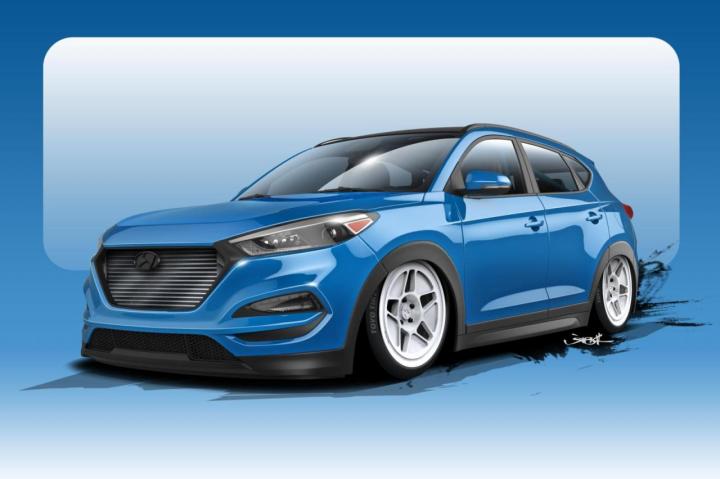
To produce that massive thrust, Hyundai has partnered with Canadian firm Bisimoto Engineering for the fourth straight year, building off the success of the 708-hp Sonata and the 550-hp Genesis that were shown at previous events. Dubbed the “Brute Ute” by Bisimoto, the vehicle equips a heavily modified version of Hyundai’s 2.4-liter “Theta-II” power plant, one that features upgraded internals, a high-boost turbo, and a new engine management system to keep all 700-plus-hp running smoothly. Power is transferred to the ground via a six-speed manual.
“The 2016 Tucson was the perfect platform for this year’s build, offering me the opportunity to captivate a wider audience by tapping into the growing popularity of the CUV market,” said Bisi Ezerioha, owner of Bisimoto. “After hundreds of hours of testing and developing new engine components, we’re confident that this power plant can handle what we’re asking from it, delivering a fresh, race-bred take on the 2016 Tucson with performance and reliability at its core.”
Unique styling is obviously a huge part of the SEMA culture, so the Tucson has been given a “very clean street fighter look” according to the brand’s press release. The vehicle has only been revealed in digital renderings for now, but it’s been slammed to the ground on custom air suspension, which allows the white five-star wheels to tuck nicely underneath the fenders.
A custom roll cage has been fitted to the car as well, and the grille has been eliminated altogether in favor of a massive front-mounted intercooler. Clearly, this ain’t your average crossover.
Editors' Recommendations
- 2025 Hyundai Tucson Plug-In Hybrid gets improved tech features
- What it means now that Kia and Hyundai have adopted Tesla’s charging standard
- Hyundai’s new MobED robot can carry booze and babies
- Hyundai Sonata Hybrid’s solar roof can deliver up to 700 miles of ‘free’ driving
- Hyundai S-A1 flying taxis could take flight by 2023 for Uber elevate


